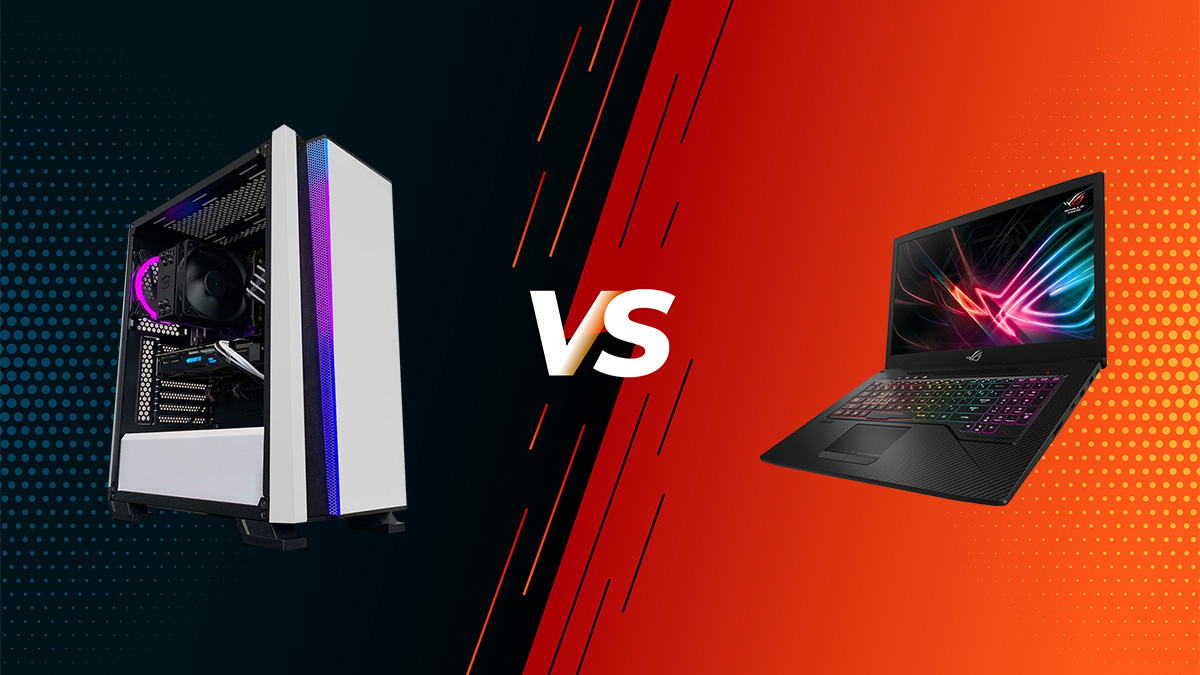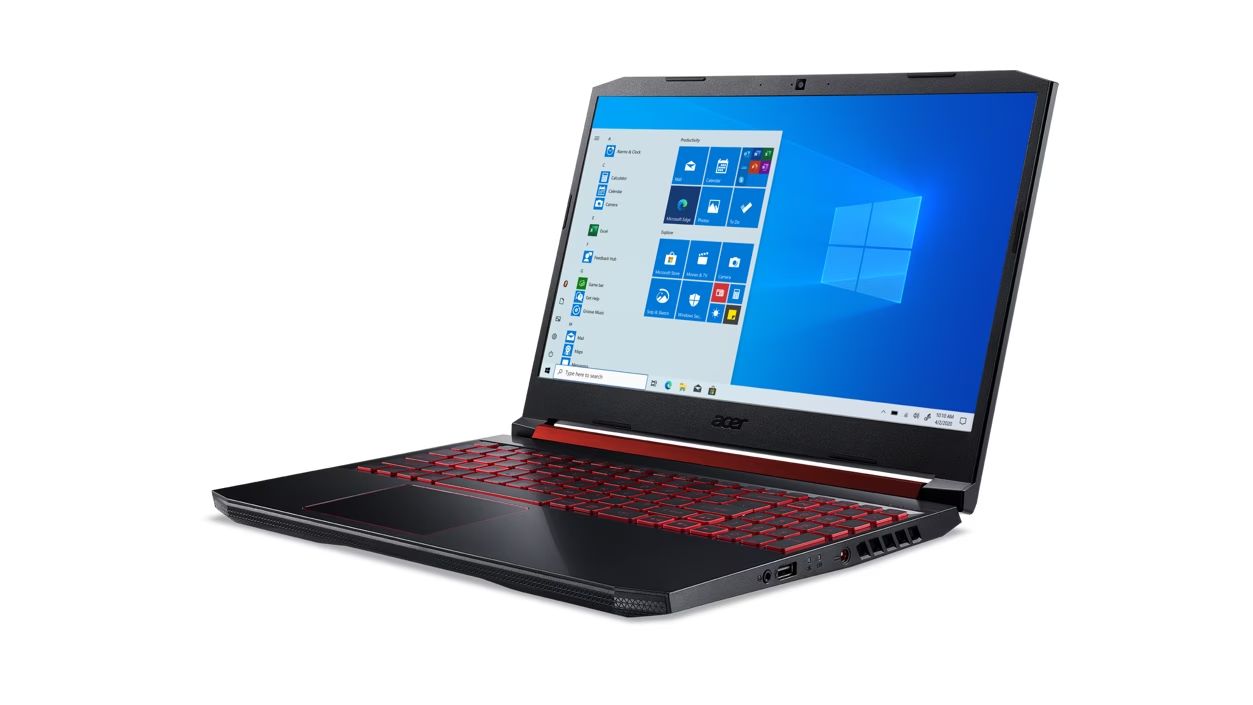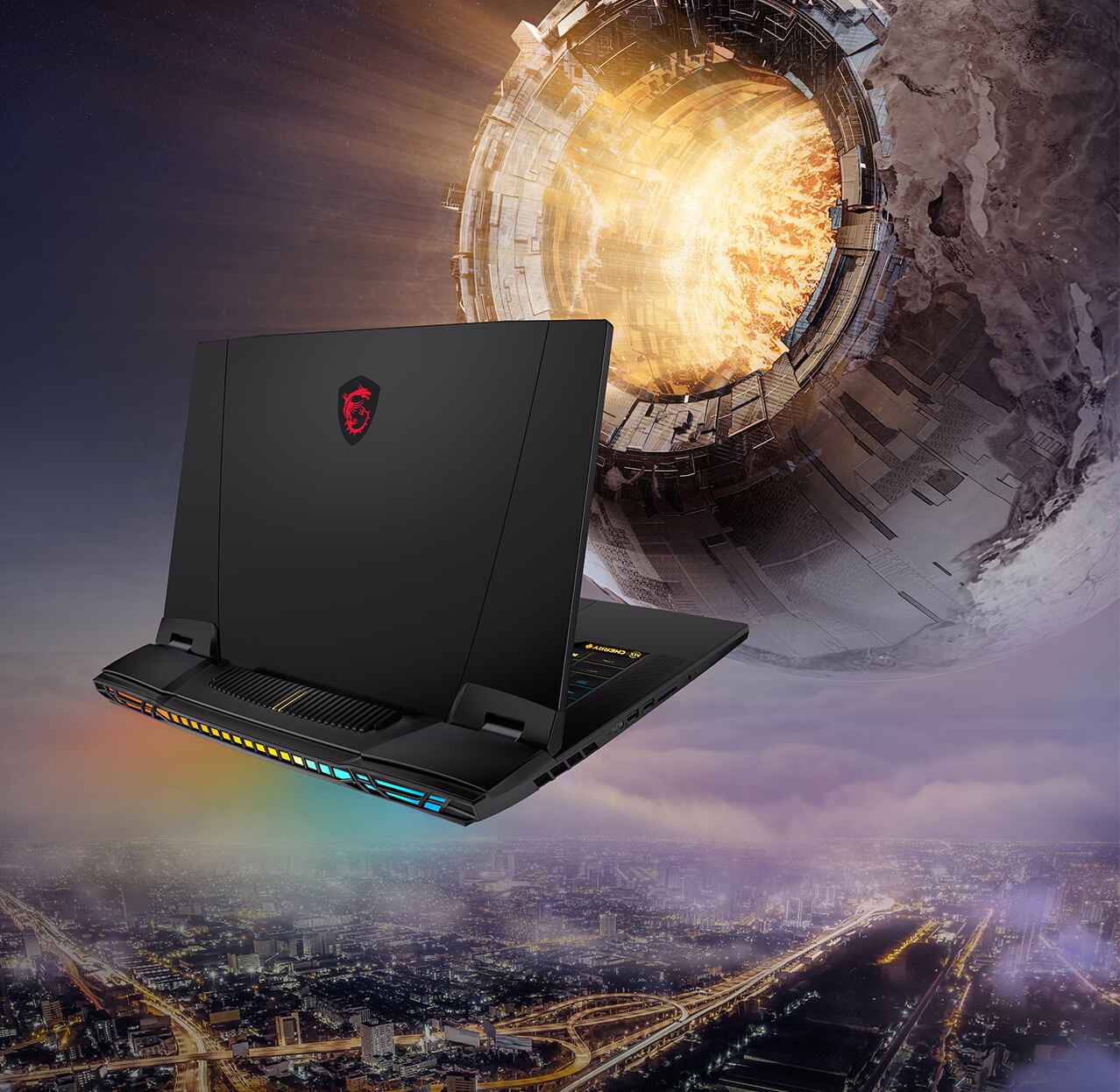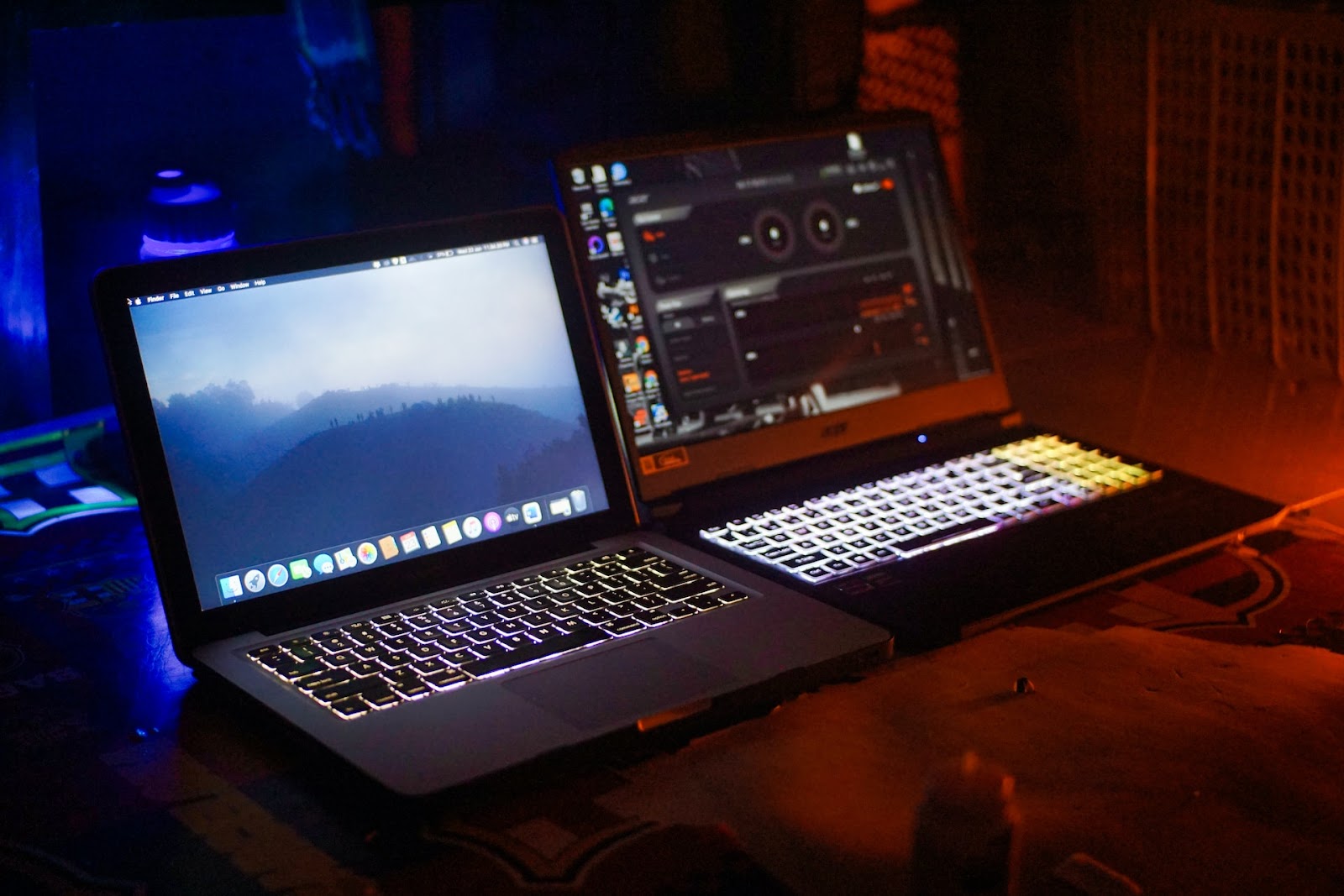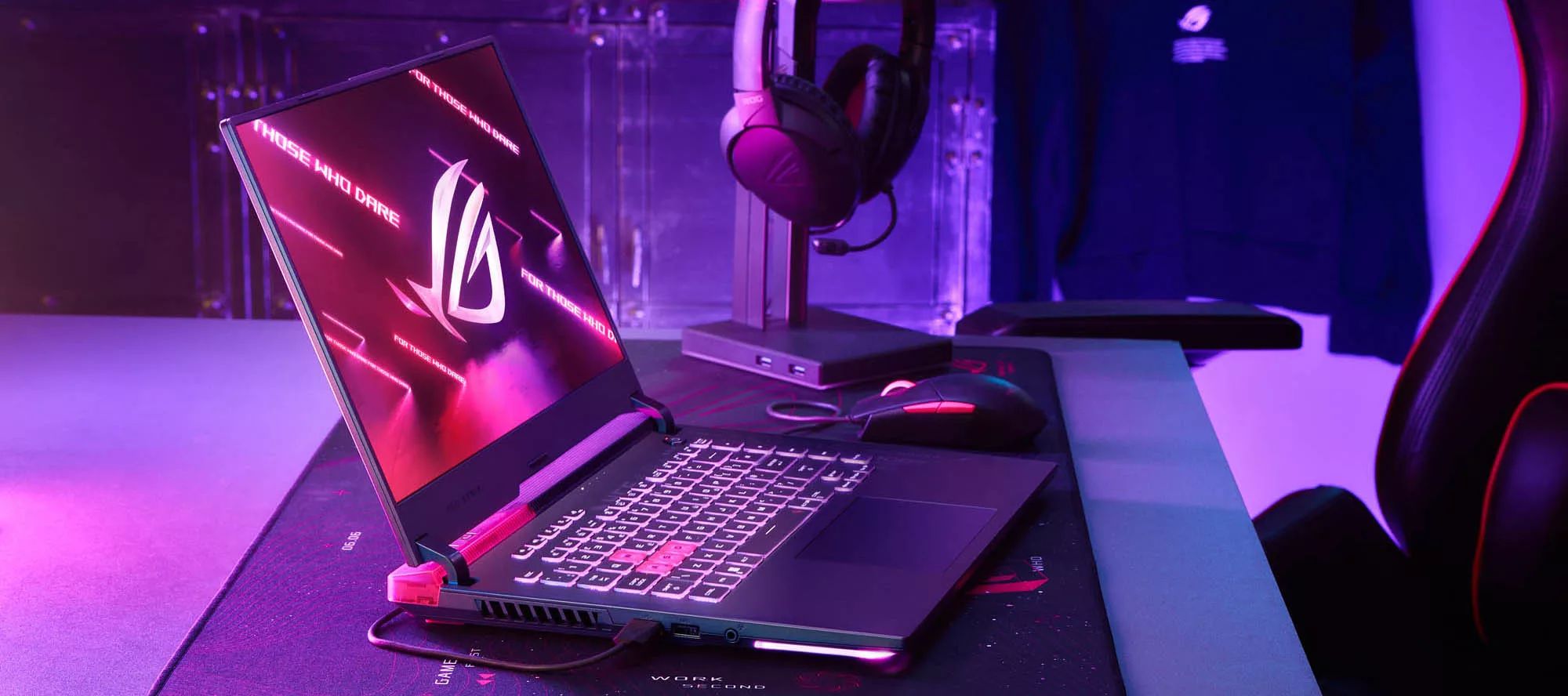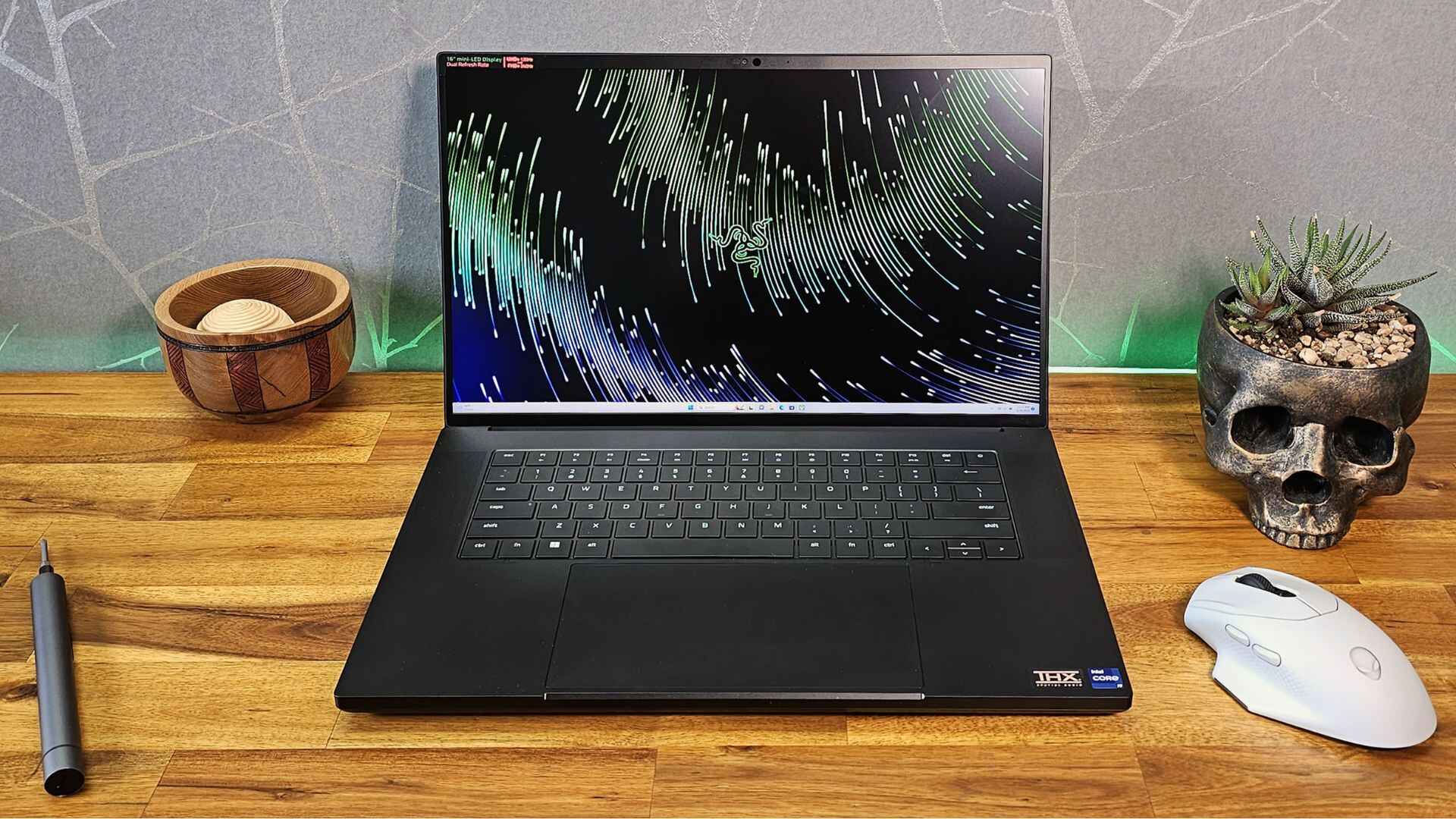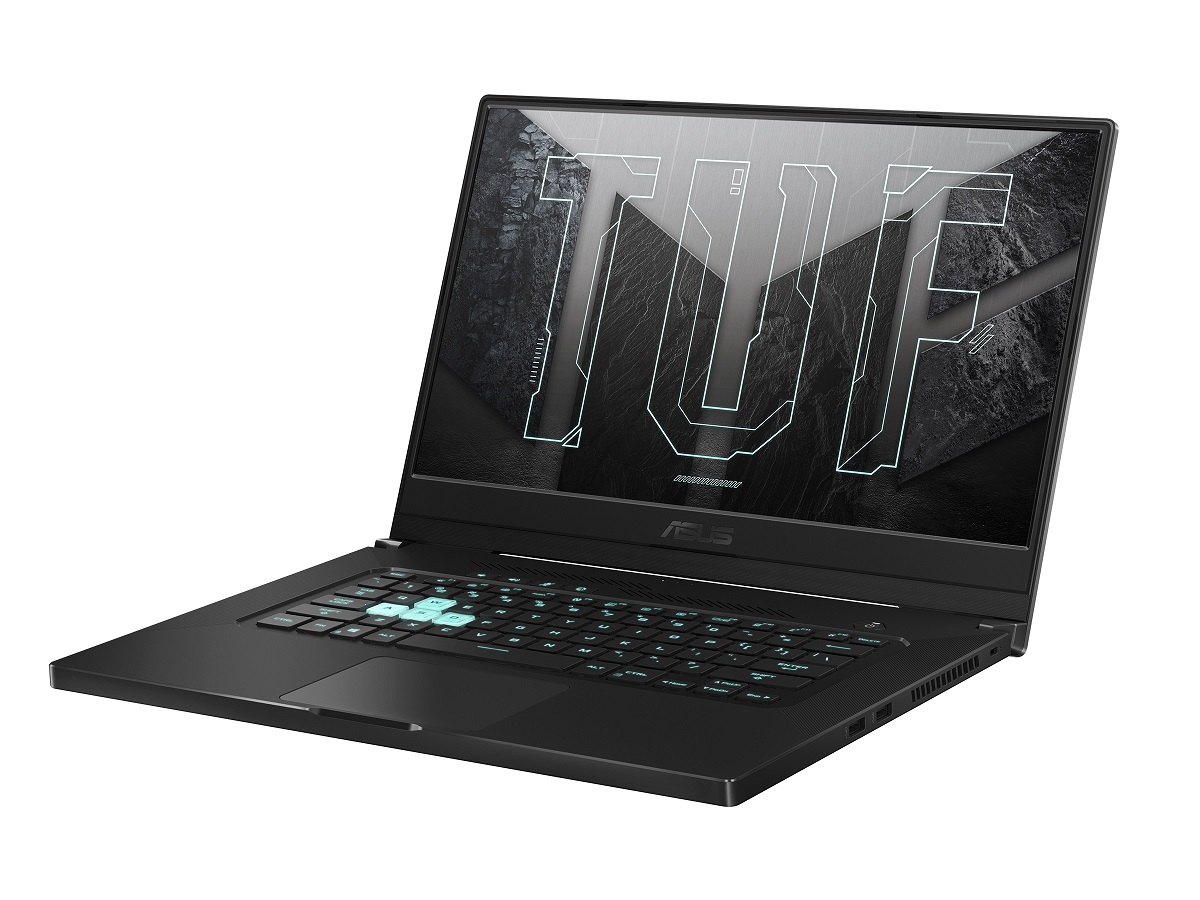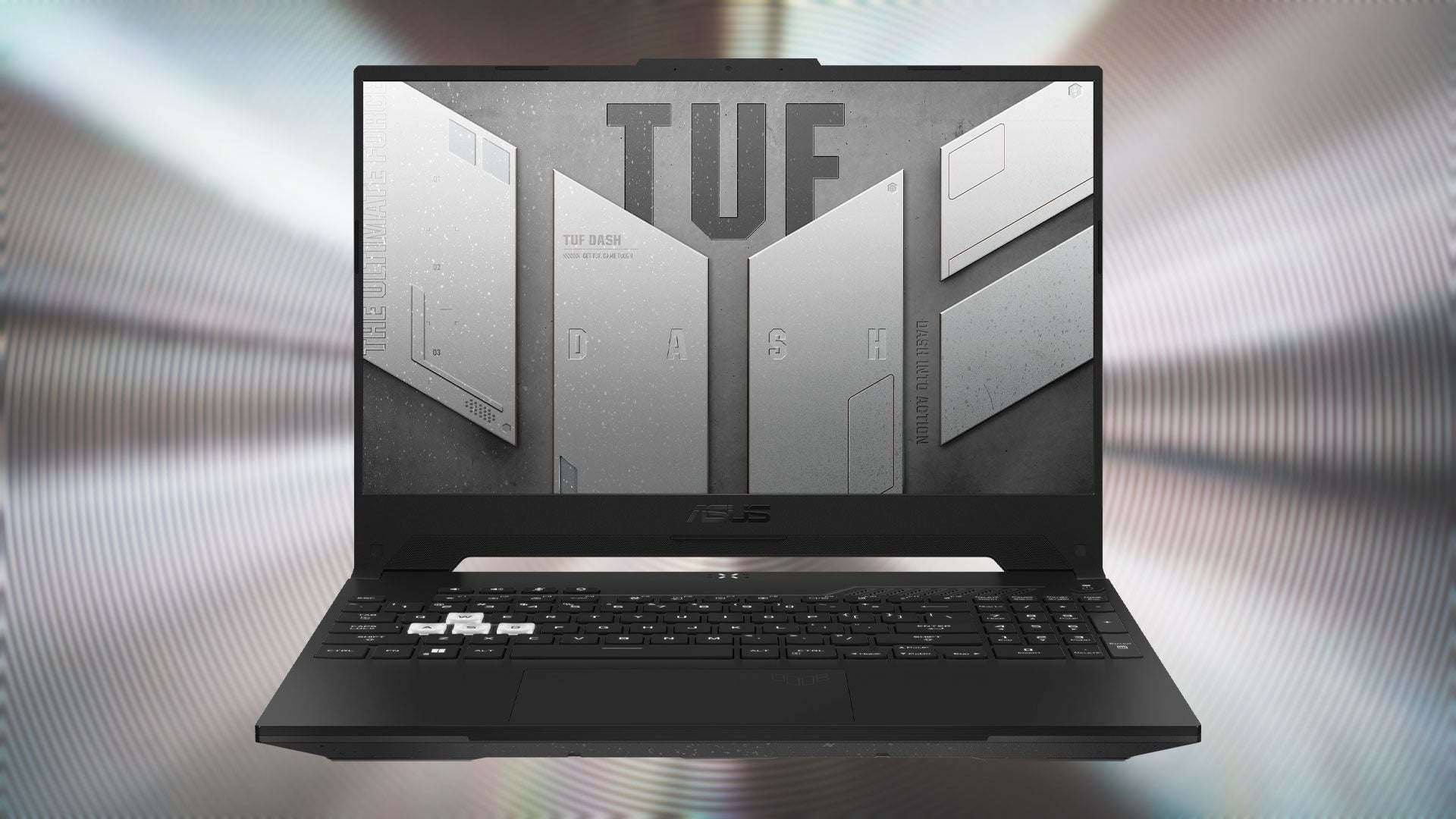Introduction
Welcome to the world of laptops, where a wide array of options awaits you. Whether you’re a casual user or an enthusiastic gamer, choosing the right laptop can make a significant difference in your overall computing experience. Among the various laptop choices, gaming laptops and regular laptops are two distinct categories that cater to different needs and preferences.
A gaming laptop, as the name suggests, is engineered to deliver an optimal gaming experience. It is equipped with high-performance components and advanced features specifically designed to handle the demanding requirements of modern games. On the other hand, a regular laptop is more versatile and suitable for everyday tasks such as web browsing, document editing, and multimedia consumption.
In this article, we will delve into the differences between a gaming laptop and a regular laptop, exploring the key factors that set them apart. By understanding these distinctions, you will be able to make an informed decision and choose the right type of laptop that aligns with your specific needs and budget.
Definition of a Gaming Laptop
A gaming laptop is a powerful and specialized device designed to deliver exceptional gaming performance. Unlike regular laptops, which emphasize versatility and portability, gaming laptops prioritize high-speed processing, top-of-the-line graphics, and immersive gaming experiences. These laptops are equipped with cutting-edge hardware components and advanced features to handle resource-intensive games without compromising on visuals or smooth gameplay.
One of the main differentiating factors of a gaming laptop is its powerful processor. These laptops typically feature high-performance CPUs, such as Intel Core i7 or AMD Ryzen processors. These processors have multiple cores and higher clock speeds, allowing for seamless multitasking and faster processing of game data.
Graphics performance is another crucial aspect of a gaming laptop. These laptops are equipped with dedicated graphics cards, often from NVIDIA or AMD, which provide superior visual rendering capabilities. These cards come with their own dedicated video memory, delivering stunning graphics and smooth frame rates, even for graphically demanding games.
In addition to a powerful processor and dedicated graphics card, gaming laptops also boast a large amount of RAM. With a minimum of 8GB or even 16GB of RAM, these laptops can handle the memory requirements of demanding games, allowing for faster data access and smoother gameplay.
Storage is yet another important consideration for gamers. Gaming laptops often come with a combination of solid-state drives (SSDs) and traditional hard drives (HDDs). SSDs provide faster boot times and quick data access, while HDDs offer larger storage capacities for storing game files and other multimedia content.
To ensure an immersive gaming experience, gaming laptops also feature high-resolution displays with fast refresh rates. Many gaming laptops offer Full HD (1920×1080) or even higher resolution displays, delivering crisp visuals and vibrant colors. Additionally, some gaming laptops support NVIDIA G-Sync or AMD FreeSync technology, which synchronizes the display refresh rate with the graphics card’s output, minimizing screen tearing and enhancing overall gameplay smoothness.
Lastly, gaming laptops are often equipped with advanced cooling systems. The powerful processors and dedicated graphics cards generate a significant amount of heat during intensive gaming sessions. To prevent thermal throttling and maintain optimal performance, gaming laptops come with robust cooling mechanisms, including multiple fans and heat sinks.
Definition of a Regular Laptop
A regular laptop, also known as a traditional laptop or a standard laptop, is a versatile computing device designed to meet the needs of everyday users. Unlike gaming laptops, regular laptops prioritize portability, versatility, and a balance between performance and affordability. These laptops are suitable for a wide range of tasks, including web browsing, productivity work, multimedia consumption, and casual gaming.
One of the defining characteristics of a regular laptop is its emphasis on portability. Regular laptops are typically lightweight and slim, making them easy to carry around. They are designed for users who need to work on the go or switch between different locations frequently.
In terms of performance, regular laptops offer a range of options to suit different needs. They are equipped with mainstream processors, such as Intel Core i3 or i5, or AMD Ryzen 3 or 5 processors. While not as powerful as gaming laptop processors, these CPUs provide ample performance for everyday tasks, such as web browsing, word processing, and multimedia playback.
Graphics performance is another differentiating factor between regular laptops and gaming laptops. Regular laptops often rely on integrated graphics, which are built into the CPU. These integrated graphics are designed to handle basic graphics tasks, such as video playback and casual gaming. While they may not be suitable for high-end gaming or graphics-intensive applications, they are perfectly capable of handling everyday multimedia needs.
Regular laptops typically come with a standard amount of RAM, ranging from 4GB to 8GB. This amount of memory is sufficient for everyday multitasking activities, such as browsing multiple tabs, running productivity applications, and media playback. However, if you have more demanding requirements, such as heavy multitasking or running memory-intensive applications, you may prefer a higher RAM configuration or consider upgrading the RAM later on.
In terms of storage, regular laptops usually offer a range of options. They commonly come with a traditional hard disk drive (HDD) for larger storage capacities, allowing you to store a significant amount of data, files, and multimedia content. Some regular laptops may also offer solid-state drives (SSDs) or a combination of both, providing faster boot times and improved overall system responsiveness.
Regular laptops typically feature a standard display resolution, such as Full HD (1920×1080), which provides clear and crisp visuals for everyday tasks. They may not offer the high refresh rates or specialized display technologies found in gaming laptops, but they are perfectly suitable for web browsing, document editing, and multimedia consumption.
While regular laptops may lack the high-end gaming capabilities and advanced features of gaming laptops, they are generally more budget-friendly and offer a broader range of options to suit different needs and budgets.
Hardware Specifications
The hardware specifications of a laptop play a vital role in determining its performance and capabilities. When comparing gaming laptops and regular laptops, there are significant differences in their hardware configurations.
Gaming laptops are known for their powerful hardware specifications, designed to handle the demanding requirements of modern games. They often feature high-performance processors, such as Intel Core i7 or AMD Ryzen processors. These CPUs have multiple cores and higher clock speeds, allowing for smooth multitasking and efficient processing of game data. Regular laptops, on the other hand, generally come with mainstream processors, such as Intel Core i3 or i5 and AMD Ryzen 3 or 5 processors. While these processors are capable of handling most everyday tasks, they are not as powerful as the processors found in gaming laptops.
When it comes to graphics performance, gaming laptops have a clear advantage. They are equipped with dedicated graphics cards, often from NVIDIA or AMD, which provide superior visual rendering capabilities. These graphics cards have their own dedicated video memory, allowing for stunning graphics and smooth gameplay, even for graphically demanding games. On the other hand, regular laptops often rely on integrated graphics, which are built into the CPU. While integrated graphics can handle basic graphics tasks and casual gaming, they are not as powerful as dedicated graphics cards found in gaming laptops.
Another significant difference lies in the amount of RAM. Gaming laptops typically have a minimum of 8GB or even 16GB of RAM, allowing for faster data access and smoother multitasking during intense gaming sessions. Regular laptops, on the other hand, often come with 4GB to 8GB of RAM, which is sufficient for everyday tasks but may not provide the same level of performance for memory-intensive applications or multitasking.
Storage options also differ between gaming laptops and regular laptops. Gaming laptops often offer a combination of solid-state drives (SSDs) and traditional hard disk drives (HDDs). SSDs provide faster boot times and quick data access, which can significantly improve overall system responsiveness. HDDs, on the other hand, offer larger storage capacities, making them suitable for storing game files and multimedia content. Regular laptops, depending on the model, may offer a range of storage options, including only SSDs, only HDDs, or a combination of both.
It’s worth noting that gaming laptops tend to have larger and more powerful cooling systems compared to regular laptops. The powerful processors and dedicated graphics cards in gaming laptops generate more heat, and a robust cooling system is necessary to prevent thermal throttling and maintain optimal performance. Regular laptops, being designed for everyday tasks, have smaller cooling systems that are sufficient for their hardware configurations.
In summary, gaming laptops have more powerful processors, dedicated graphics cards, larger amounts of RAM, and versatile storage options that cater to the intense requirements of gaming. Regular laptops, while not as powerful, provide sufficient hardware specifications for everyday tasks and offer a range of options to suit different budgets and needs.
Graphics Performance
When it comes to graphics performance, gaming laptops and regular laptops display significant differences. Gaming laptops are designed to excel in this area, offering top-of-the-line dedicated graphics cards that deliver exceptional visual rendering capabilities.
Gaming laptops commonly feature dedicated graphics cards from leading manufacturers such as NVIDIA or AMD. These graphics cards are specifically designed to handle the demanding graphics requirements of modern games. With their dedicated video memory and powerful GPUs, gaming laptops can produce stunning visuals, realistic textures, and smooth frame rates, even in graphically intensive games.
Furthermore, gaming laptops often support advanced technologies like NVIDIA’s GeForce RTX series, which incorporates real-time ray tracing and artificial intelligence to enhance graphical realism. These features bring lifelike lighting, reflections, and shadows to games, creating a truly immersive gaming experience.
In contrast, regular laptops typically rely on integrated graphics, which are built into the CPU. Integrated graphics chips are not as powerful as dedicated graphics cards and are primarily designed to handle basic graphics tasks like video playback, web browsing, and casual gaming. They share system memory, which can limit their performance and overall graphical capabilities.
Integrated graphics can handle less demanding games and older titles reasonably well. However, when it comes to running modern AAA games with high-quality settings, regular laptops may struggle to provide smooth frame rates and detailed visuals. Players may need to lower the graphics settings or play less demanding games to achieve an enjoyable gaming experience on regular laptops.
It’s important to note that gaming laptops’ superior graphics performance extends beyond gaming itself. These laptops are also well-suited for creative professionals who work with graphics-intensive applications such as video editing, 3D modeling, and graphic design. The enhanced graphical capabilities of gaming laptops allow for faster rendering times and smoother performance in these applications.
Overall, gaming laptops outshine regular laptops in terms of graphics performance. Their dedicated graphics cards, optimized drivers, and advanced graphical technologies enable them to handle demanding games and graphics-intensive applications with ease. Regular laptops, while capable of handling basic graphics tasks, may struggle with modern games and resource-intensive applications.
Display Quality
The display quality is an important factor to consider when comparing gaming laptops and regular laptops. Gaming laptops often prioritize the visual experience, offering high-resolution displays with fast refresh rates and specialized technologies, while regular laptops typically provide standard displays that cater to everyday tasks.
Gaming laptops often feature high-resolution displays, starting from Full HD (1920×1080) and going up to 4K Ultra HD (3840×2160). These high-resolution screens provide crisp and detailed visuals, enhancing the overall gaming experience. The higher pixel density allows for sharper images and more vibrant colors, making games visually stunning and realistic.
In addition to resolution, gaming laptops also tend to have fast refresh rates. Refresh rate refers to how many times the display refreshes in one second and is measured in hertz (Hz). Most gaming laptops offer refresh rates of 120Hz or even 144Hz, providing smoother motion and reduced motion blur. This feature is particularly important in fast-paced games where quick reactions and fluid movements are crucial.
Moreover, some gaming laptops feature technologies like NVIDIA G-Sync or AMD FreeSync. These technologies synchronize the refresh rate of the display with the graphics card’s output, eliminating screen tearing and stuttering. This synchronization ensures smoother gameplay and enhances the overall visual performance, resulting in a more immersive gaming experience.
On the other hand, regular laptops usually come with standard displays that offer a balance between resolution and cost-effectiveness. These displays commonly have Full HD (1920×1080) resolution, which is suitable for everyday tasks such as web browsing, document editing, and multimedia consumption. While they may not offer the same level of detail and clarity as gaming laptop displays, they are perfectly adequate for regular computing activities.
It’s essential to note that regular laptops may offer additional display options, such as touchscreens or flip screens for versatile usage. These features cater to users who value touchscreen capabilities or prefer to use their laptop in convertible modes for presentations, note-taking, or drawing.
In summary, gaming laptops prioritize display quality by offering high-resolution screens, fast refresh rates, and advanced technologies like G-Sync or FreeSync. These features enhance the visual experience and provide a competitive edge in gaming. Regular laptops, while not excelling in display quality, provide standard screens that are suitable for everyday tasks and may offer additional options like touchscreens for added versatility.
Cooling System
The cooling system is a crucial component in both gaming laptops and regular laptops, as it helps maintain optimal performance and prevents overheating. However, gaming laptops typically have more robust cooling systems compared to regular laptops, given their high-performance hardware and demanding usage scenarios.
Gaming laptops are equipped with advanced cooling mechanisms to dissipate the heat generated by powerful processors and dedicated graphics cards. These cooling systems often incorporate multiple fans, heat pipes, and heat sinks, strategically placed to efficiently draw heat away from the internal components. The fans ensure proper airflow, while the heat sinks absorb and disperse the heat, preventing overheating and potential performance throttling.
Additionally, gaming laptops may also feature specialized cooling technologies such as vapor chambers or liquid cooling. These advanced cooling solutions allow for even more efficient heat dissipation, ensuring that the laptop can handle prolonged gaming sessions without compromising performance.
In contrast, regular laptops typically have less complex cooling systems due to their less demanding hardware and lower power consumption. They generally have single fans or smaller heat sinks to regulate temperature. Regular laptops are designed to handle everyday computing tasks, which do not generate as much heat as intensive gaming or resource-intensive applications. As a result, their cooling systems are sufficient to maintain optimal performance during regular usage.
It’s worth noting that the efficiency of the cooling system can impact the laptop’s sustainability and lifespan. Gaming laptops, with their robust cooling systems, are better equipped to handle prolonged gaming and prevent excessive heat buildup. This can help extend the overall lifespan of the laptop and minimize the risk of hardware damage due to overheating.
Regular laptops, while not as powerful or demanding in terms of heat generation, still require proper cooling to ensure optimal performance and longevity. It’s important to ensure adequate ventilation by keeping the laptop on a flat surface and avoiding blocking the air vents.
In summary, gaming laptops feature advanced cooling systems with multiple fans, heat pipes, and heat sinks, designed to handle the heat generated by high-performance components. Regular laptops, on the other hand, have simpler cooling systems that are sufficient for everyday tasks. Adequate cooling is essential for both laptop types to prevent overheating, maintain optimal performance, and prolong the lifespan of the device.
Portability and Design
When it comes to portability and design, there are noticeable differences between gaming laptops and regular laptops. These differences cater to the specific needs and preferences of different users.
Regular laptops are designed with portability in mind. They are generally lightweight, compact, and slim, making them easy to carry around and convenient for users who are frequently on the move. Regular laptops are often preferred by students, business professionals, and individuals who prioritize mobility and need a device that can be easily transported between locations.
In terms of design, regular laptops typically have a sleek and minimalist aesthetic. They are often available in a variety of color options and offer a clean and professional appearance. Regular laptops also tend to be thinner, making them visually appealing and easier to slide into bags or backpacks.
Gaming laptops, on the other hand, prioritize performance over extreme portability. Due to the powerful hardware components and advanced cooling systems required for optimal gaming performance, gaming laptops tend to be bulkier and heavier than regular laptops. This is a trade-off for the increased power and capabilities that gaming laptops offer.
Despite their bulkier design, gaming laptops still strive to maintain a visually appealing and modern look. They often feature aggressive styling, illuminated keyboards, and customizable RGB lighting, giving them a distinct and eye-catching appearance. The design of gaming laptops is often influenced by the gaming community’s preferences for a futuristic and high-performance aesthetic.
While gaming laptops may not be as portable as regular laptops, they do offer a level of portability that allows for occasional mobility. They are suitable for gamers who attend LAN parties or travel with their laptops on occasion. Additionally, gaming laptops can serve as powerful desktop replacements, offering the flexibility to be used in different locations without compromising on performance.
It’s important to consider your specific needs and priorities when it comes to portability and design. If you value extreme portability and a lightweight device, a regular laptop may be the better option. However, if you prioritize gaming performance and are willing to sacrifice some portability, a gaming laptop can provide the power and capabilities you need.
In summary, regular laptops excel in portability and are designed to be lightweight and slim, catering to users who prioritize mobility and convenience. Gaming laptops, while bulkier and heavier, offer a level of portability that allows for occasional mobility, serving as powerful desktop replacements. The design of regular laptops focuses on a sleek and minimalist aesthetic, while gaming laptops exhibit aggressive styling and customizable lighting options.
Battery Life
Battery life is a crucial consideration when comparing gaming laptops and regular laptops. It determines how long the laptop can operate on a single charge and directly impacts portability and usability.
Gaming laptops are known for their power-hungry hardware components, such as high-performance processors and dedicated graphics cards. These components require a significant amount of power, leading to relatively shorter battery life compared to regular laptops. Gaming laptops typically offer battery life ranging from 3 to 6 hours, depending on factors such as the intensity of the gaming session and the specific laptop model. However, it’s worth noting that more recent gaming laptops often come with improved power management features and technologies, allowing for better energy efficiency and extended battery life compared to older models.
Regular laptops, on the other hand, tend to prioritize longer battery life for increased productivity and portability. These laptops are designed to handle everyday computing tasks with more modest power consumption. As a result, regular laptops can often provide battery life ranging from 6 to 10 hours or even more, depending on usage patterns, screen brightness, and other factors. This extended battery life allows users to work, browse the web, or enjoy multimedia content without constantly needing to be near a power outlet.
It’s important to note that the battery life of any laptop can vary based on usage patterns and specific configurations. More demanding tasks like gaming or running resource-intensive applications will drain the battery faster, while lighter tasks like web browsing or document editing will consume less power.
To optimize battery life for both gaming laptops and regular laptops, certain tips can be followed. Lowering screen brightness, closing unnecessary background applications, and reducing CPU and GPU usage when not required can all help extend battery life. Additionally, some laptops offer power-saving modes or battery optimization software that can be enabled to further maximize battery performance.
In summary, gaming laptops generally have shorter battery life due to their high-performance hardware, while regular laptops prioritize longer battery life for increased productivity and portability. However, it’s important to note that battery life can vary based on usage patterns and specific configurations. By adjusting settings and managing power consumption, users can maximize battery life for both gaming laptops and regular laptops.
Price
Price is a significant factor to consider when comparing gaming laptops and regular laptops. The cost of a laptop can vary greatly depending on the brand, specifications, and overall performance.
Gaming laptops tend to be more expensive compared to regular laptops due to their high-performance hardware and specialized features. The powerful processors, dedicated graphics cards, ample RAM, and advanced cooling systems found in gaming laptops contribute to their higher price tags. Gaming laptops also often come with high-resolution displays, fast refresh rates, and other gaming-specific features, all of which add to the overall cost.
As gaming laptops cater to the needs of avid gamers and creative professionals, they need to have the processing power and graphical capabilities to handle demanding tasks. However, the added performance and premium components come at a higher cost.
In contrast, regular laptops are designed for everyday tasks and have a broader range of options to suit different budgets. They offer affordable options for users who primarily need a laptop for web browsing, document editing, and multimedia consumption. Regular laptops come with mainstream processors, integrated graphics, and standard amounts of RAM that are sufficient for these less demanding tasks.
The price of regular laptops can vary depending on factors such as the brand, build quality, display quality, storage capacity, and additional features. There are budget-friendly options available for those who prioritize affordability over high-performance gaming capabilities.
It’s important to accurately assess your needs and budget when considering the price of a laptop. If gaming or resource-intensive tasks are a priority and you have the budget for it, investing in a gaming laptop can provide you with the necessary performance and features. However, if you mainly require a laptop for everyday tasks and have budget constraints, a regular laptop can be a more cost-effective option.
It’s worth noting that prices for both gaming laptops and regular laptops can fluctuate depending on various factors such as promotions, sales, and the release of new models. It’s advisable to research and compare different laptops within your desired price range to find the best balance between performance and affordability.
In summary, gaming laptops are generally pricier than regular laptops due to their high-performance components and specialized features. Regular laptops offer a wider range of options, catering to different budgets and providing affordable choices for everyday computing needs.
Conclusion
Choosing between a gaming laptop and a regular laptop ultimately depends on your specific needs, preferences, and budget. Both options have their distinct advantages and cater to different usage scenarios.
If you are a dedicated gamer or a creative professional who requires powerful hardware, superior graphics performance, and immersive gaming experience, a gaming laptop is the ideal choice. Gaming laptops offer top-of-the-line processors, dedicated graphics cards, high-resolution displays with fast refresh rates, and advanced cooling systems. However, keep in mind that gaming laptops tend to be more expensive and less portable compared to regular laptops.
On the other hand, if you prioritize portability, versatility, and cost-effectiveness, a regular laptop is likely the better option. Regular laptops are designed to handle everyday tasks such as web browsing, document editing, and multimedia consumption. They provide a balance between performance and affordability, typically offering longer battery life, lightweight design, and a range of options to suit different budgets.
It’s essential to assess your specific needs and usage patterns before making a decision. Consider the types of tasks you’ll be performing on your laptop, whether it’s gaming, professional work, or casual web browsing. Additionally, consider your budget and determine what level of performance you require.
Remember that technology is constantly evolving, and new laptops are released regularly. It’s advisable to research and compare different models, read reviews, and consider future-proofing options when making your decision. Look for laptops that offer the right balance of performance, portability, and price to ensure a satisfying computing experience for years to come.
Ultimately, the choice between a gaming laptop and a regular laptop boils down to your specific needs, preferences, and budget. Whether you’re an avid gamer seeking the latest gaming experience or a casual user looking for everyday functionality, there is a laptop out there that will meet your requirements.







